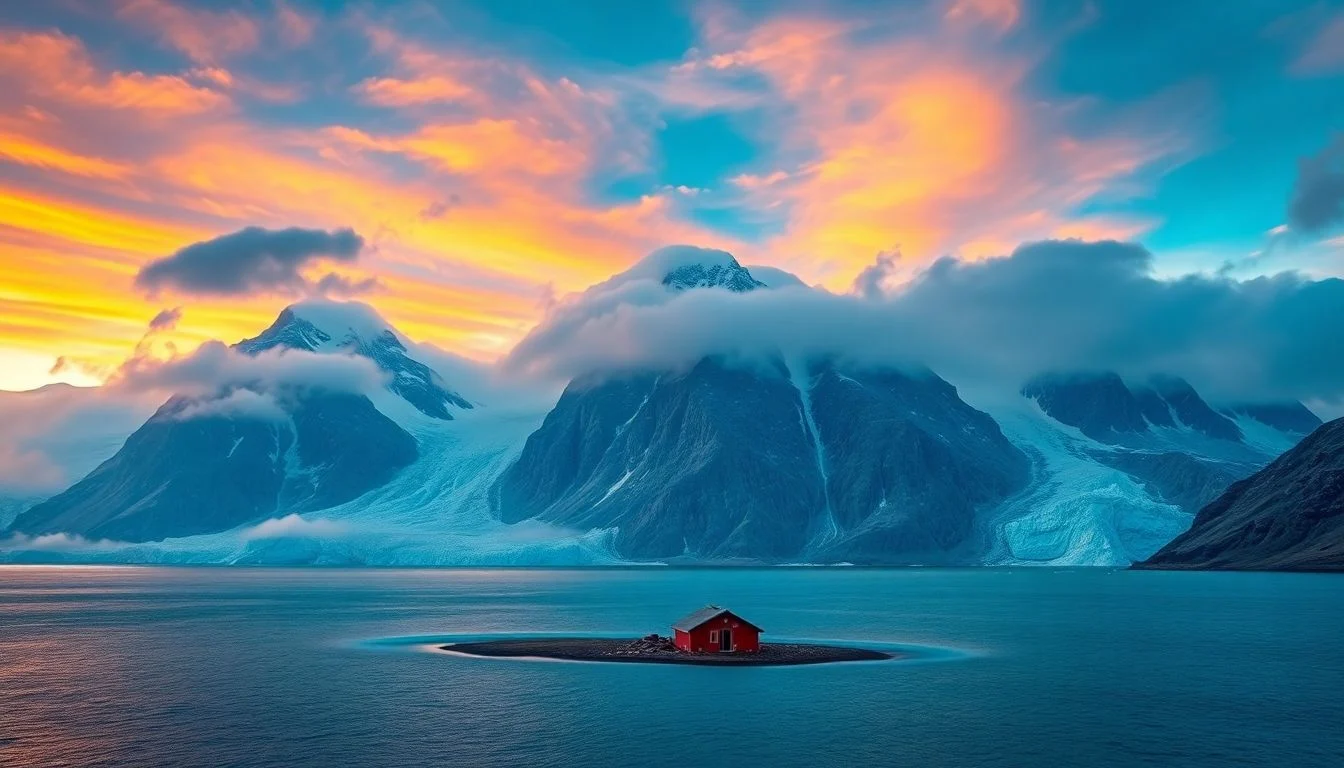
Greenland. It’s a land of raw beauty, where ice meets the sky. Imagine towering glaciers and colorful villages. Each season brings changes to what you can experience. When is the best time to visit Greenland? It depends on what you want. Weather, prices, and events all play a role.
Greenland’s Seasonal Spectacle: A Month-by-Month Breakdown
Greenland transforms throughout the year. It’s like nature’s own show. Let’s explore what each season offers visitors.
Spring (April-May): Awakening Landscapes and Shoulder Season Savings
Spring in Greenland is a time of change. The ice starts to melt. More daylight appears after winter’s darkness. You can enjoy snowshoeing and skiing. Whale watching tours begin. Prices are lower than in the summer. There are fewer crowds at this time of year. It’s a sweet spot if you want to save money.
Summer (June-August): Midnight Sun and Hiking Havens
Summer is Greenland’s peak season. The sun shines 24 hours a day. This is ideal for hiking and boat tours. Kayaking is very popular during the summer. The downside? Higher prices and more tourists exist. Still, the long days are amazing for exploring the landscape.
Autumn (September-October): Northern Lights and Colorful Vistas
Autumn is short but beautiful. The Northern Lights appear. The landscape changes color before winter. Prices drop compared to summer. But, be ready for unpredictable weather. It’s a gamble, but the rewards can be great. Catching the Aurora Borealis is a sight you won’t forget.
Winter (November-March): Frozen Fjords and Arctic Darkness
Winter in Greenland is extreme. Expect very cold temperatures and short days. Dog sledding and ice caving are popular. The Northern Lights are often visible. This is also a time to experience Greenlandic culture. It is a special time, so long as you don’t mind the cold!
Decoding Greenland’s Weather Patterns: A Traveler’s Guide
Weather in Greenland is never boring. It can change quickly! Knowing what to expect helps you prepare.
Temperature Averages: Coastal vs. Inland
Temperatures vary a lot in Greenland. Coastal areas are milder than inland areas. The Greenland Ice Sheet affects temperatures. In summer, coastal temperatures might reach 50°F (10°C). In winter, inland temperatures can plummet below -22°F (-30°C).
Precipitation and Snowfall: Packing Essentials
Expect rain and snow at any time of year. Summer can bring rain. Winter brings lots of snow. Pack waterproof and warm clothes. Layers are crucial for adapting to the weather. Good boots are a must, too!
Daylight Hours: Maximizing Your Arctic Adventure
Daylight hours are very important. They affect what you can do. Summer offers 24 hours of daylight. Winter brings only a few hours. Plan your activities around the daylight. This way, you will get the most out of your trip.
Budgeting Your Greenland Trip: Navigating Peak and Off-Season Prices
Greenland can be expensive. Knowing how to budget helps a lot. Prices change a lot based on the season.
Accommodation Costs: From Hotels to Guesthouses
Hotel prices are highest in summer. Guesthouses are cheaper than hotels. Camping might be an option during the summer, but not the winter! Look for deals and book in advance. It can save you money.
Activity Prices: Tours, Excursions, and Rentals
Tours and excursions cost money. Prices can be high, especially in summer. Look for package deals to save. Renting gear yourself can be more affordable. Compare prices from different tour companies.
Transportation Costs: Flights, Ferries, and Local Travel
Flights to Greenland are a big cost. Ferries are often needed to get around. Local travel can be expensive, too. Book flights well in advance. This can help you find lower prices.
Experiencing Greenland’s Cultural Calendar: Festivals and Events
Greenlandic culture is unique. Several events showcase this special heritage.
Qilakitsoq Mummy Find Anniversary
While not always a formal celebration, the anniversary of the Qilakitsoq mummy find is an important date. The mummies offer a fascinating look into the past. The find occurred in 1972.
National Day (June 21st): A Celebration of Greenlandic Culture
National Day is on June 21st. It’s a big celebration. Expect music, dancing, and local food. It’s a great way to experience Greenlandic culture. Towns and villages across Greenland host events.
Northern Lights Festivals: Embracing the Arctic Night
Some towns host Northern Lights festivals. These usually occur in winter. The festivals have workshops and tours. Check local listings for events. These are exciting ways to enjoy the Arctic night.
Conclusion
So, what is the best time to visit Greenland? It truly depends on you. Summer offers long days for hiking. Winter is for the Northern Lights. Spring and autumn offer fewer crowds and lower prices. Each season brings its own magic. Now, it is time to begin planning your adventure!


Leave a Reply
You must be logged in to post a comment.